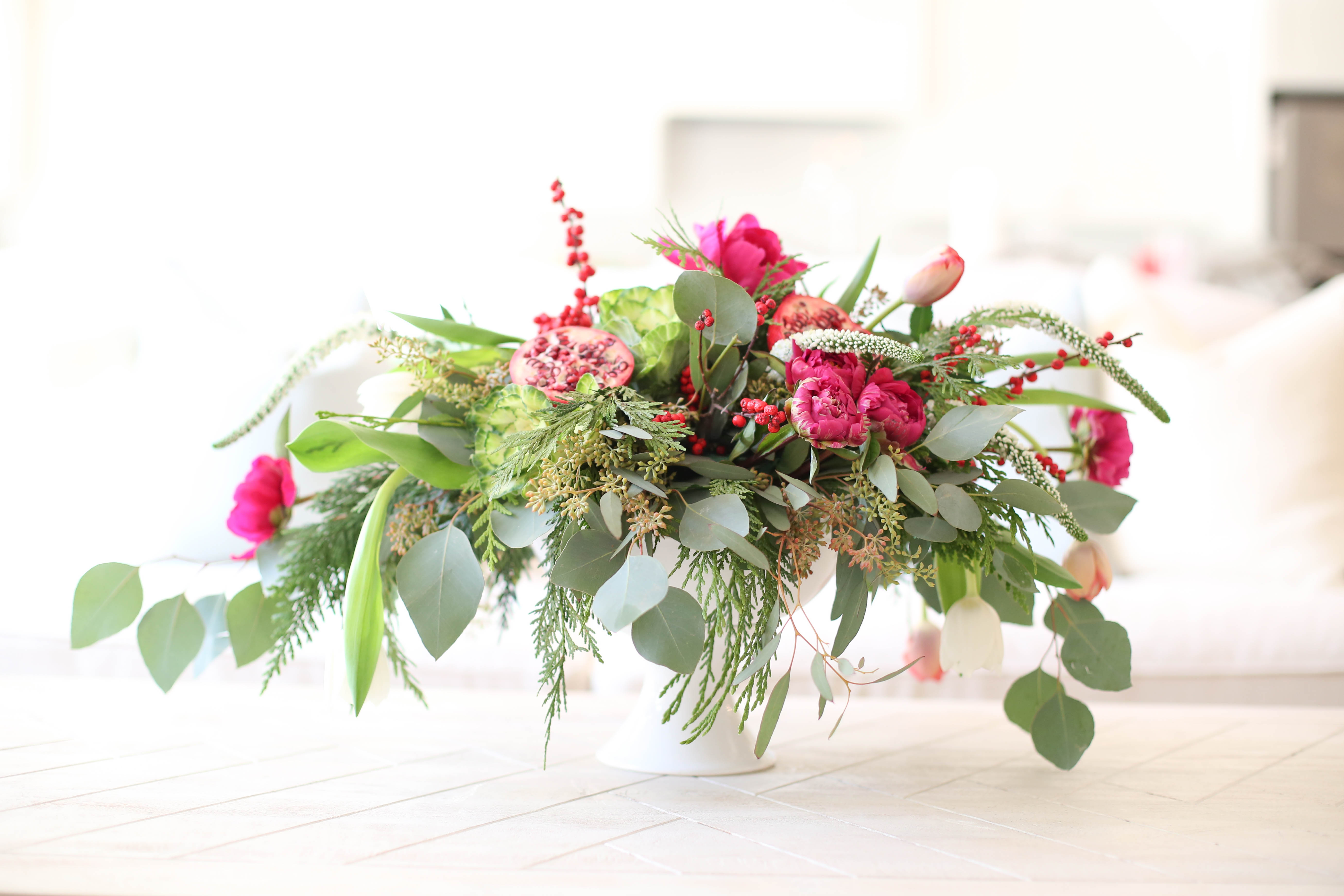 About a year ago, I took my first ever floral arranging class from local Tallahassee floral designer, Catherine Shock, a.k.a. The Highland Gardener. Not only did I learn how to assemble this gorgeous arrangement, but I walked away with the most helpful tips and tricks, and a newfound love for flowers I never knew I had. Since that class, I’ve continued to dabble in arranging and was even inspired to plant a cut flower garden in my backyard this summer so that I could have fresh flowers at my fingertips!
About a year ago, I took my first ever floral arranging class from local Tallahassee floral designer, Catherine Shock, a.k.a. The Highland Gardener. Not only did I learn how to assemble this gorgeous arrangement, but I walked away with the most helpful tips and tricks, and a newfound love for flowers I never knew I had. Since that class, I’ve continued to dabble in arranging and was even inspired to plant a cut flower garden in my backyard this summer so that I could have fresh flowers at my fingertips!
Since Catherine’s class had such an impact on me, I asked her if she’d be open to sharing some of her tips and tricks for making an easy and affordable arrangement with you guys and she happily agreed! With the right vessel, tools and techniques, she showed me how to take generic grocery store flowers and turn them into a fabulous and artful arrangement.
Here’s how to do it:
STEP 1: SELECT YOUR VESSEL
Know what vase you’re planning to use before you purchase flowers – that way you know you will have enough to work with. Catherine suggests looking in the kitchen section at Home Goods, TJ Maxx or Marshalls for unique containers like trifle dishes or water pitchers with interesting shapes (all of these are from Home Goods).

STEP 2: PROCESS YOUR FLOWERS
After you purchase your flowers, you’ll want to cut each stem at an angle before placing in water. This allows the flower to drink the water and will ultimately extend its life. Catherine uses a pairing knife like the one pictured below, but scissors work well too.
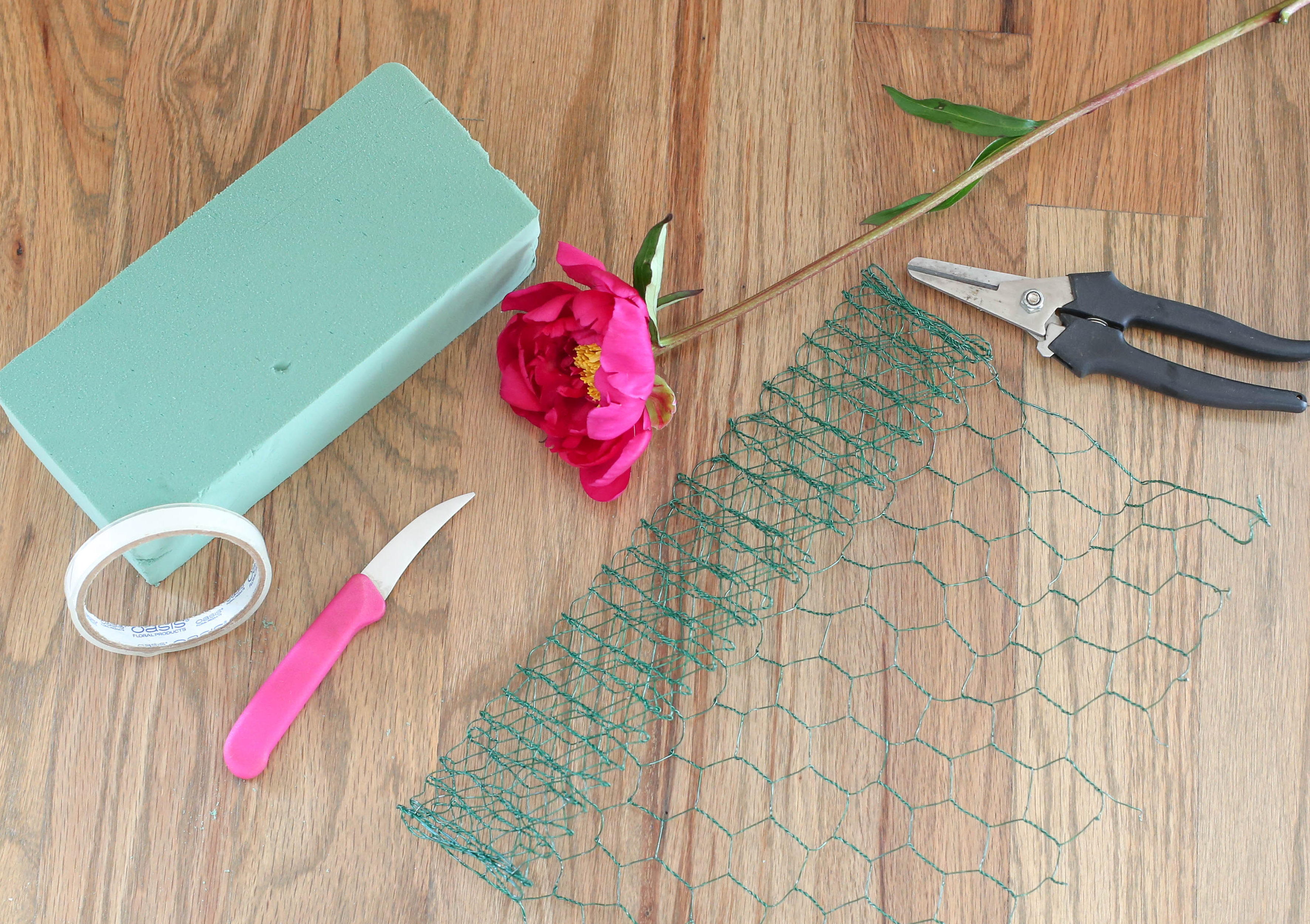
STEP 3: ASSEMBLE YOUR BASE
While floral foam can seem a bit intimidating or even unnecessary, it really is helpful for creating a beautiful and professional-looking arrangement. It not only allows you to properly create compositions that would otherwise be difficult to support, but it extends the life of your arrangements by giving them a steady water source. You can purchase floral foam (make sure it is “wet” foam) from a craft store like Michaels or off Amazon.
- Always cut your floral foam so that it is about 1″ higher than the rim of your container. This allows the flowers to be arranged more naturally, so that the stems flow down to the sides and in front of the arrangement.
- The foam should be soaked at least a half hour before assembling your arrangement. Fill up your sink and just drop it in. You don’t want to push it in, just let it fall naturally into the water – this prevents any dry pockets from forming in the foam.
- Next, create a grid on top of the foam using floral tape (again, make sure this is “wet” floral tape). It comes in a very dark green color or clear. Floral tape is key to anchoring your arrangement and holding everything in place, especially if you plan to transport your arrangement anywhere. If you don’t have time to get real floral tape, scotch tape will work too, it just won’t be as sturdy.
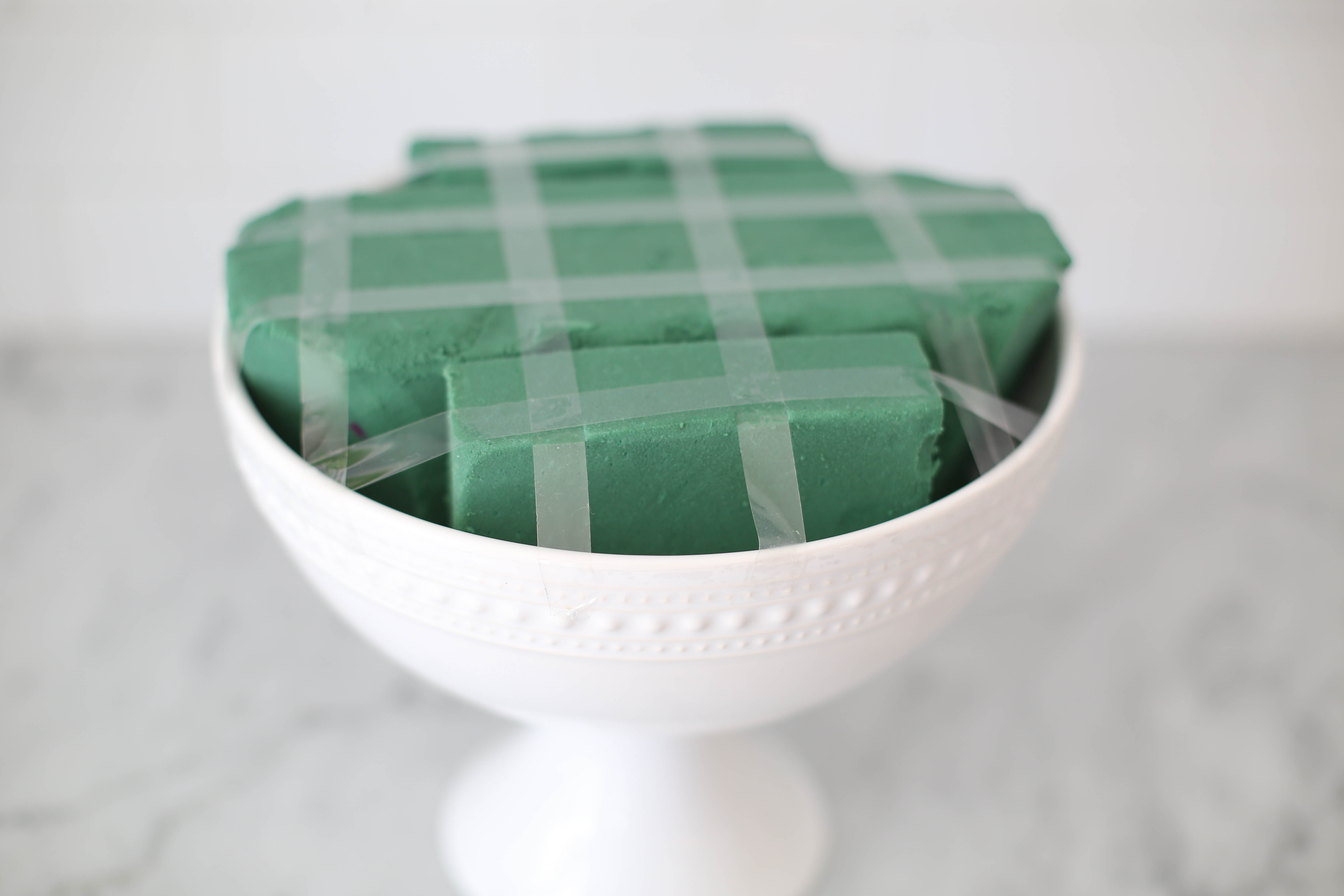
STEP 4: START WITH GREENERY
In this arrangement, Catherine used Silver Dollar and Seeded Eucalyptus (purchased at Trader Joe’s) and some leftover cedar clippings as this was right before Christmas and it was readily available. She started with the larger greenery first (the Silver Dollar) adding in just a few pieces at a time to create a base. Next she layered in the Cedar and then the Seeded Eucalyptus. One very important and key lesson I learned from Catherine’s first class is that you do not want ANY leaves in the vase – only stems. Submerged leaves will rot, create bacteria, and shorten the life of your arrangement.
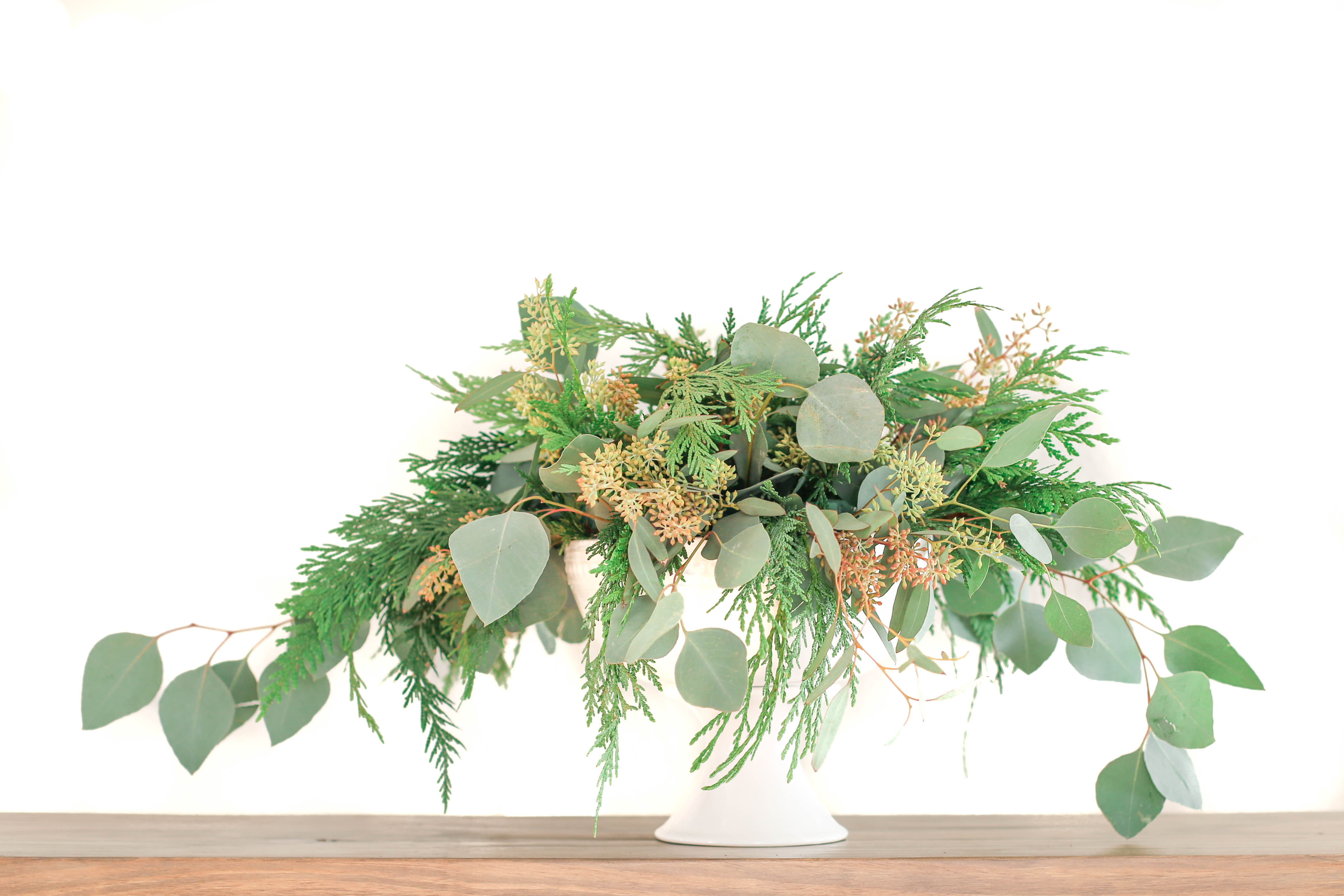
STEP 5: ADD YOUR FOCAL BLOOMS
Once you’ve achieved a desired base shape with your greenery, begin adding in your focal flowers. For this arrangement, Catherine selected Tulips, Peonies and Decorative Kale as her focal flowers (all were purchased at Whole Foods). Look for flowers and foliage with different shapes, colors and textures as this will create a more interesting design.
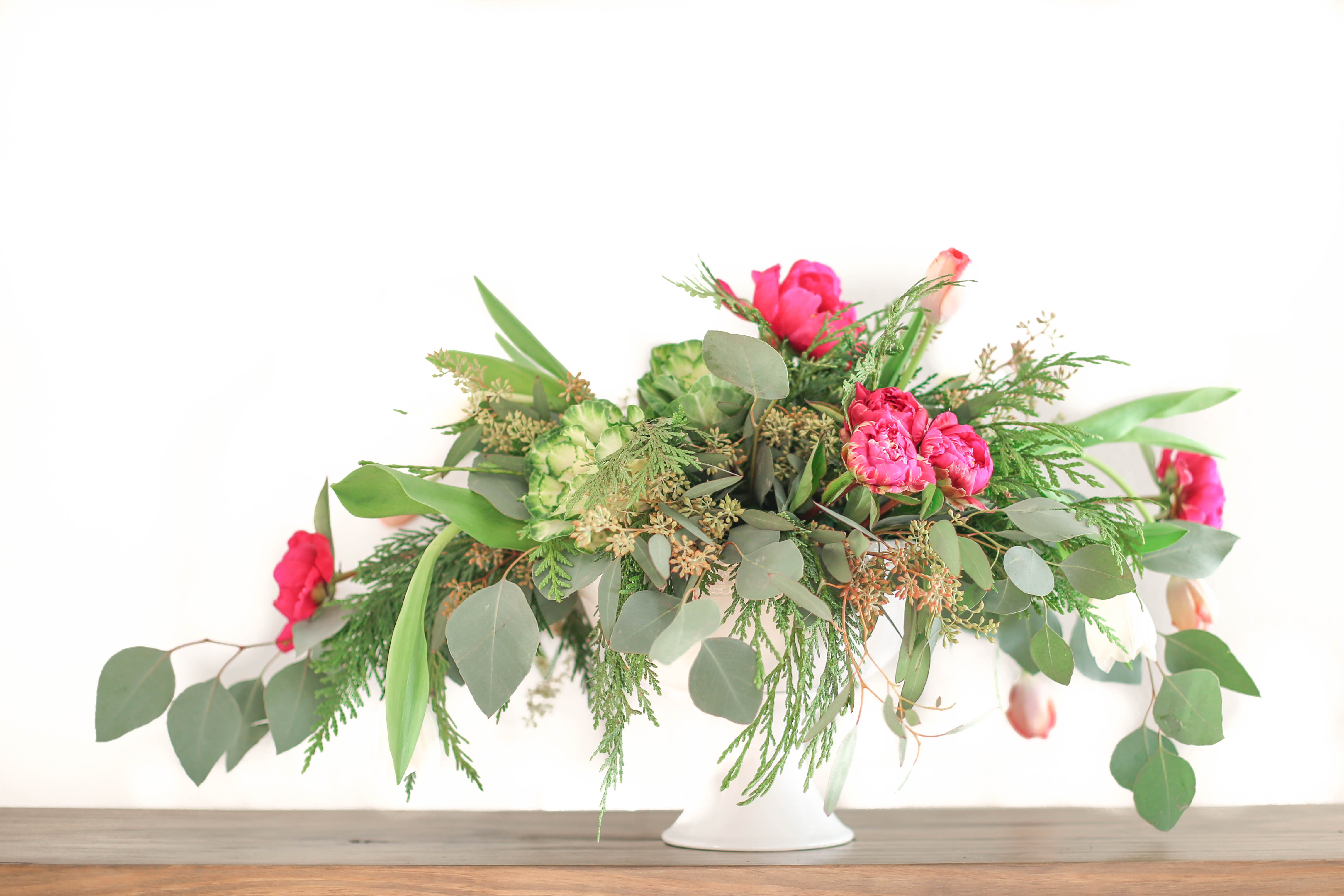

STEP 6: FILL IN WITH “FILLERS”
Filler flowers like Stock, Bells of Ireland and Queen Anne’s Lace act as stepping stones between the other materials and help to “fill in” the arrangement. Using different textured materials will also reflect the light differently and give interest to the design. In this arrangement, Catherine used Veronica and red berries for fillers and both were purchased at Whole Foods.

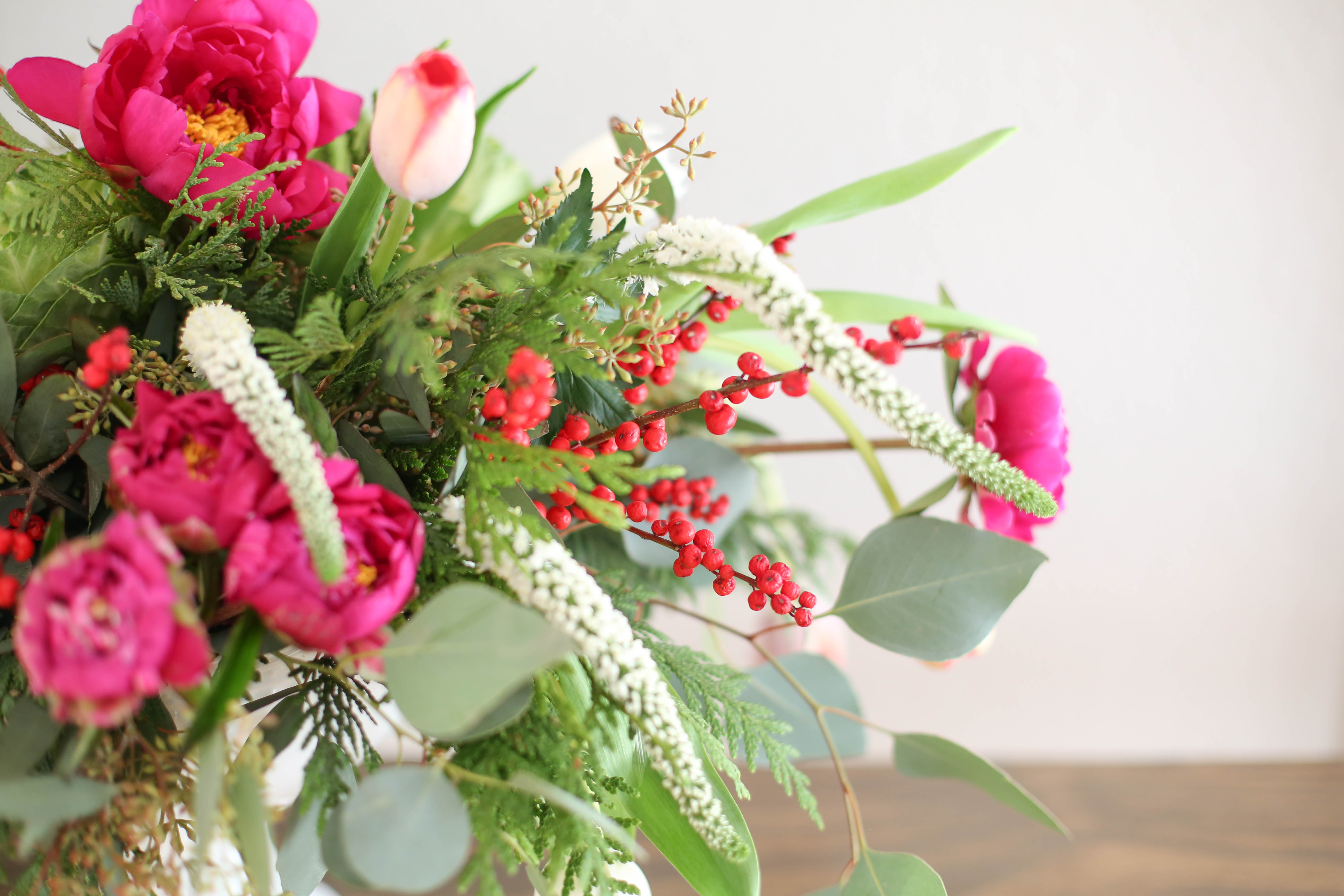
STEP 7: ADD A PUNCH OF COLOR WITH FRESH FRUIT
If you really want to take your DIY arrangement over-the-top, consider adding fresh fruit like pomegranates, persimmons or pears. The fruit adds both a pop of color and an element of interest to the overall design. Catherine simply cut the pomegranate in half, cut a small whole in the backside, then stuck in a leftover stem to anchor it to the floral foam. I was skeptical of how long the pomegranate would hold up once it was cut open, but it lasted a whole week!
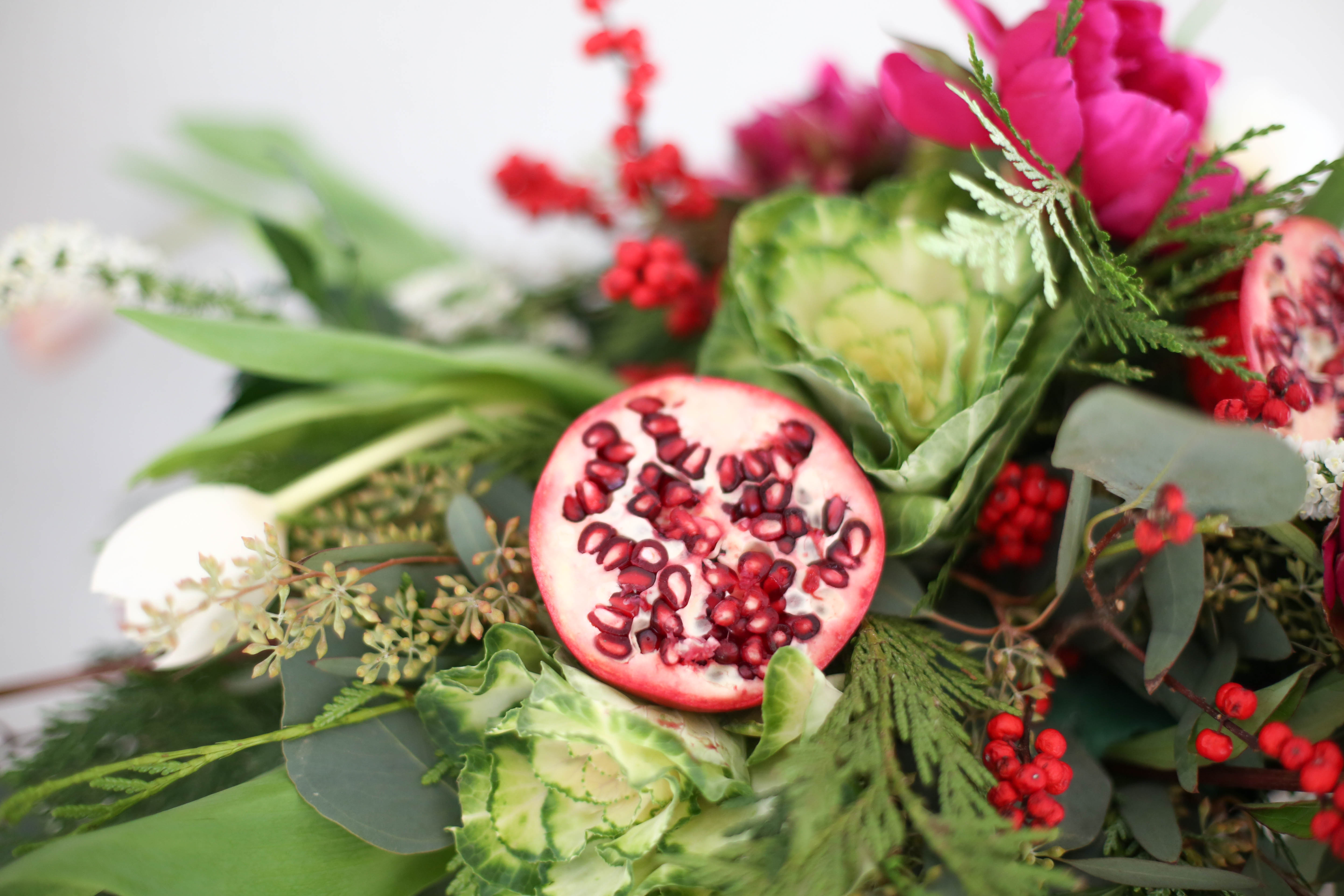
Depending on where you plan to display your arrangement, you can either make a one-sided bouquet or one that can be viewed from all sides. This one was going on my coffee table so Catherine made the arrangement in a way that could be viewed from any angle. Is it not one of the most beautiful and creative things you’ve ever seen?!

Not only is Catherine incredibly talented, but her knowledge of the industry and passion for the art of floral design is truly infectious. She is also one of the sweetest souls and a blast to work with. 🙂 To view more of Catherine’s work, click here.
Photography: Sophie Smith



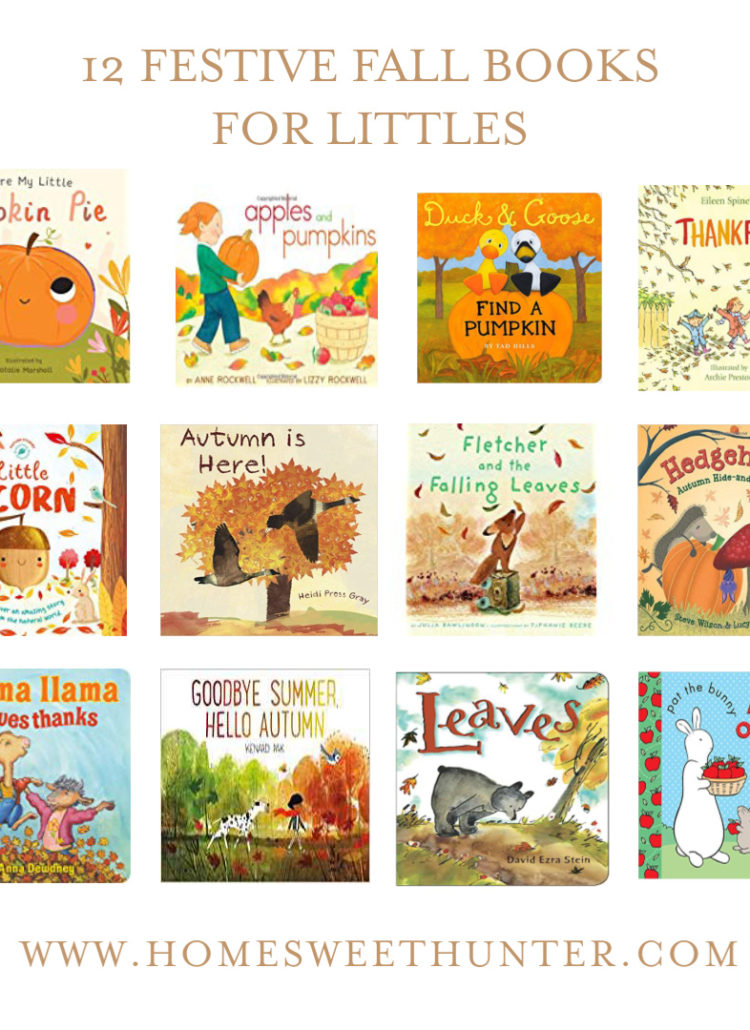
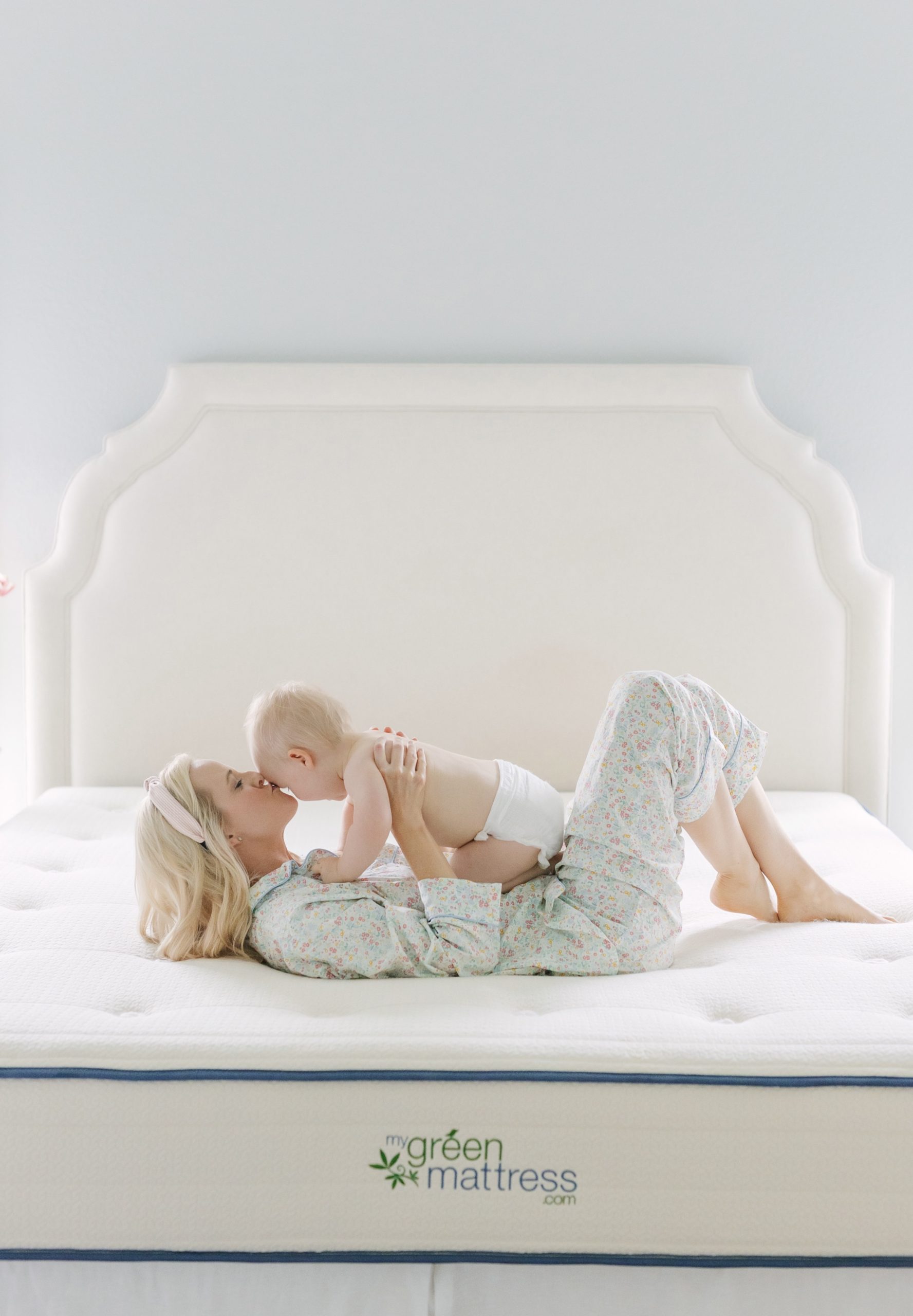
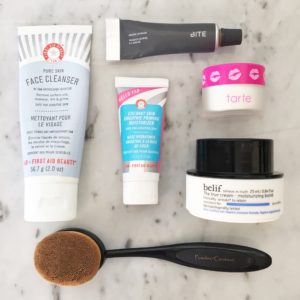
LOVE THIS! I’m now inspired to try!
Can’t wait to see your beautiful creation, Molly!